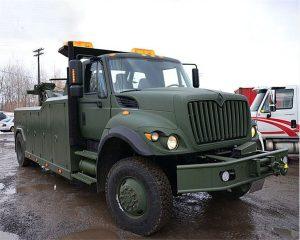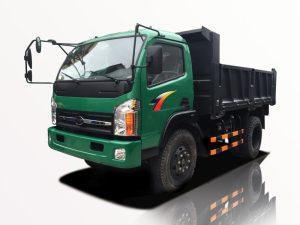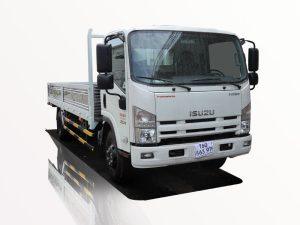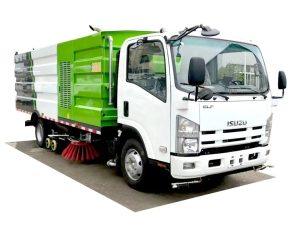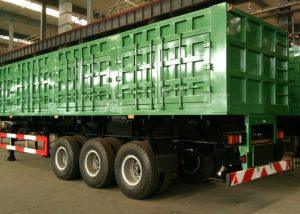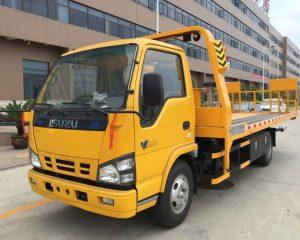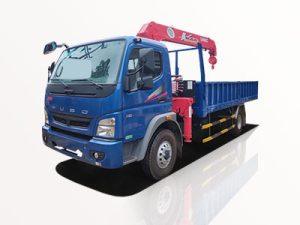Monday to Saturday - 8:00 -17:30
What Are Lorries? A Comprehensive Guide
Lorries, commonly known as trucks in many parts of the world, play a vital role in the transportation industry. They are essential for moving goods, materials, and products from one location to another. This article will delve into the various aspects of lorries, covering their types, uses, features, and much more, providing a detailed understanding of these powerful vehicles.
Table of Contents
- Definition of Lorries
- Types of Lorries
- Uses of Lorries
- Basic Components of Lorries
- Advantages of Using Lorries
- Operating Costs of Lorries
- Safety Features of Lorries
- Maintenance Tips for Lorries
- Future Trends in the Lorry Industry
- Frequently Asked Questions
Definition of Lorries
A lorry is a large, heavy motor vehicle for transporting goods or troops. In different regions, they might also be referred to as trucks, freight vehicles, or cargo vehicles. Lorries are characterized by their ability to carry loads that can range from small packages to large machinery and construction materials. They are an integral part of logistics and supply chain management, ensuring that goods reach their destination efficiently.
Types of Lorries
Lorries come in various types, each designed for specific purposes. Understanding these types can help businesses select the right vehicle for their needs.
Light Lorries
Light lorries, also known as light trucks, have a weight capacity of up to 3.5 tonnes. They are commonly used for local deliveries, small businesses, and urban environments. They can easily navigate through city traffic and require narrower parking spaces.
- Examples: Ford Transit, Mercedes-Benz Sprinter
Medium Lorries
Medium lorries have a weight capacity ranging from 3.5 to 7.5 tonnes. These vehicles are versatile and ideal for regional deliveries. They strike a balance between load capacity and maneuverability.
- Examples: MAN TGL, Isuzu N-Series
Heavy Lorries
Heavy lorries can carry a weight of over 7.5 tonnes. These are used for long-haul transport and carry bulk loads, making them indispensable in industries such as construction, manufacturing, and logistics.
- Examples: Volvo FH, Scania R Series
Uses of Lorries
The applications for lorries are diverse, playing a crucial role in numerous sectors:
- Transporting goods between warehouses and retailers.
- Delivering construction materials to job sites.
- Hauling agricultural products from farms to markets.
- Moving heavy equipment for industrial projects.
- Providing emergency response transport for equipment and supplies.
Basic Components of Lorries
Understanding the basic components of lorries helps in recognizing their function and operational capabilities. Here are the main components:
| Component | Description |
|---|---|
| Chassis | The main structure that supports the body and engine. |
| Engine | Provides the power needed to move the lorry. |
| Cab | The compartment where the driver sits and controls the vehicle. |
| Payload Area | The space used for carrying goods. |
| Wheels | Provide motion and stability. |
| Brakes | Essential for stopping the lorry safely. |
Advantages of Using Lorries
Lorries offer several advantages that make them favorable for transportation needs:
- Flexibility: Lorries can reach areas not accessible by trains or boats.
- Cost-Effective: Ideal for short to mid-distance transport, reducing costs in specific logistics scenarios.
- Variety: Different types accommodate various cargo needs.
- Speed: Faster delivery times compared to other forms of transport, especially over short distances.
Operating Costs of Lorries
When considering lorry operations, understanding the costs involved is crucial. Operating costs typically include:
- Fuel: One of the largest daily expenses, influenced by fuel prices and vehicle efficiency.
- Insurance: Necessary for legal compliance and risk management.
- Maintenance: Regular servicing to keep the lorry in safe working condition.
- Driver Salaries: Compensation for the operators of the lorry.
Safety Features of Lorries
Safety is paramount in the lorry industry, with many features designed to protect drivers and cargo:
- Anti-lock Braking System (ABS): Prevents the wheels from locking during hard braking.
- Traffic Monitoring Systems: Early warnings for obstacles and traffic conditions.
- Rear-View Cameras: Enhances visibility when reversing or changing lanes.
- Stability Control: Helps maintain control in difficult conditions or during sharp turns.
Maintenance Tips for Lorries
Regular maintenance ensures the reliability and longevity of lorries. Here are some tips for proper maintenance:
- Perform regular oil changes as recommended by the manufacturer.
- Inspect tires and brakes regularly for wear and proper function.
- Keep the cargo area clean and free from debris.
- Conduct routine checks on lights and signal systems.
- Monitor engine performance for unusual sounds or issues.
Future Trends in the Lorry Industry
The lorry industry is evolving rapidly, driven by technology and sustainability:
- Electric and Hybrid Lorries: These aim to reduce carbon footprints and operational costs.
- Automation: Advancements in driver assistance and fully autonomous lorries are on the rise.
- Telematics: Utilizing data analytics for better shipment tracking and fleet management.
- Alternative Fuels: Exploring sustainable fuel options, such as hydrogen.
Frequently Asked Questions
1. What is the difference between a lorry and a truck?
In many regions, the terms lorry and truck are interchangeable. However, “lorry” is often used in British English, while “truck” is more common in American English.
2. How much weight can a lorry carry?
The weight a lorry can carry depends on its classification. Light lorries can carry up to 3.5 tonnes, medium lorries between 3.5 to 7.5 tonnes, and heavy lorries over 7.5 tonnes.
3. What are the largest lorries in the world?
The largest lorries include models like the BelAZ 75710, which can carry up to 450 tonnes, typically used in mining operations.
4. Are lorries environmentally friendly?
While traditional lorries contribute to pollution, advancements in electric and hybrid models are making the industry more sustainable.
5. What maintenance is required for lorries?
Routine maintenance for lorries includes oil changes, tire inspections, brake checks, and regular servicing to ensure operational safety.
6. How do lorries impact the economy?
Lorries play an essential role in the economy by facilitating trade, delivering goods, and supporting various industries, contributing to regional and national growth.



